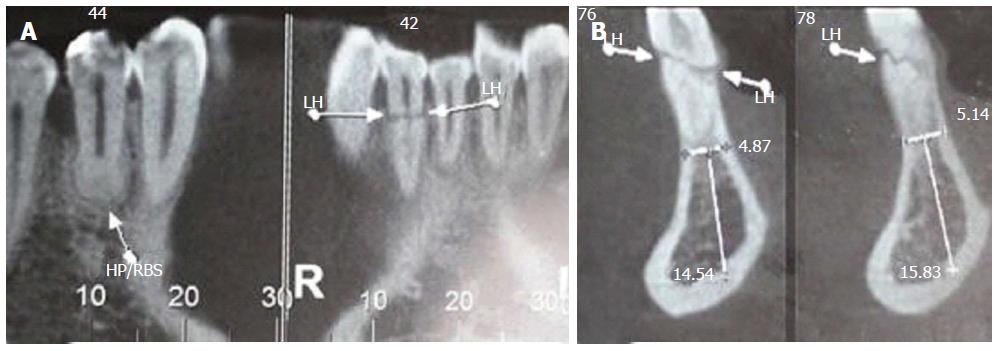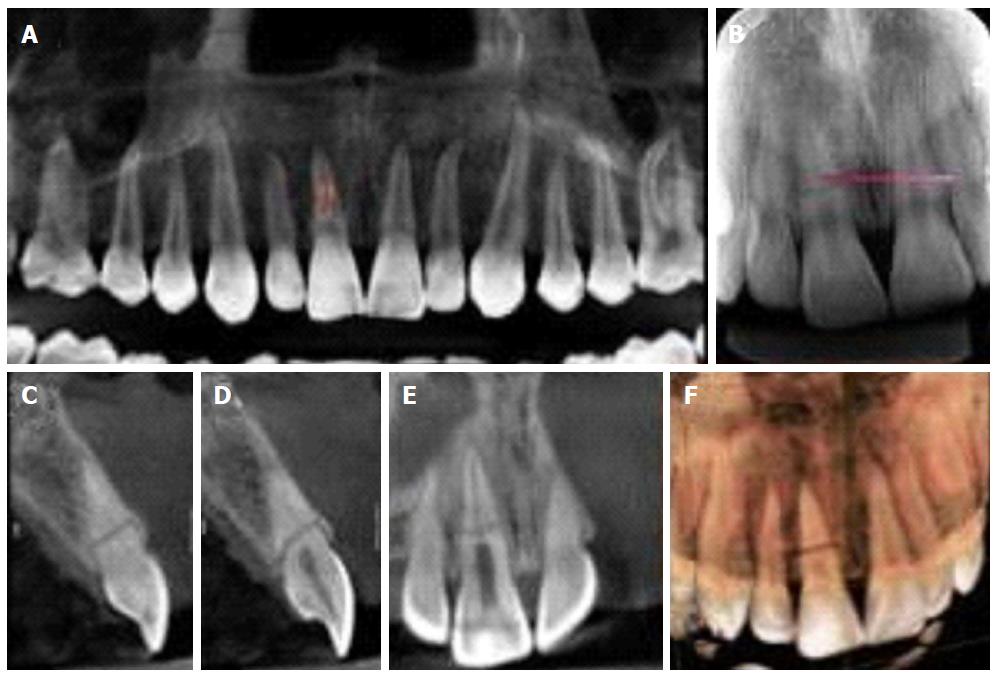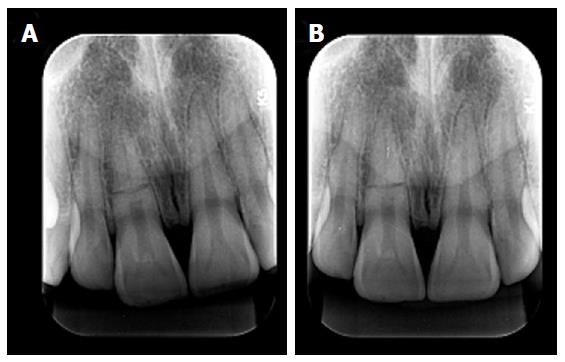Copyright
©The Author(s) 2016.
World J Radiol. Dec 28, 2016; 8(12): 928-932
Published online Dec 28, 2016. doi: 10.4329/wjr.v8.i12.928
Published online Dec 28, 2016. doi: 10.4329/wjr.v8.i12.928
Figure 1 Radiographic and clinical as immobilize the tooth with a semi-rigid splint for 4 wk up to 4 mo.
A: Panoramic radiograph taken at the moment of the accident; B: Close at the fractured tooth at the time of the accident; C: Intraoral view. Tooth 41 was slightly grayish while tooth 42 had normal color and no mobility was present; D: Periapical radiograph, tooth 41 with a radiolucent lesion compatible with periapical lesion; tooth 42 with a thin radiolucent line at the fractured line.
Figure 2 Cone beam tomography images.
A: Cone beam computed tomography (CT) shows apex remodeling and root canal apical third obliteration of teeth 44 and 43, as well as fracture line in tooth 42; B: Cone beam CT shows oblique fracture line along the middle third of tooth 42. LH: Horizontal line.
Figure 3 Cone beam tomography.
A: Panoramic coronal reconstruction of the maxilla; B: Periapical Radiograph, showing horizontal root fracture in the middle third of tooth 11; C and D: Sagital reconstructions of tooth 11, from mesial to distal sequence; E: Coronal reconstructions of the upper incisors, from buccal to lingual direction; F: 3D reconstructions (buccal and lingual views).
Figure 4 Digital periapical radiography.
A: Distoradial incidence; B: Ortoradial incidence. Horizontally root fractured observed in the tooth 11.
- Citation: Silva L, Álvares P, Arruda JA, Silva LV, Rodrigues C, Sobral APV, Silveira M. Horizontally root fractured teeth with pulpal vitality - two case reports. World J Radiol 2016; 8(12): 928-932
- URL: https://www.wjgnet.com/1949-8470/full/v8/i12/928.htm
- DOI: https://dx.doi.org/10.4329/wjr.v8.i12.928












